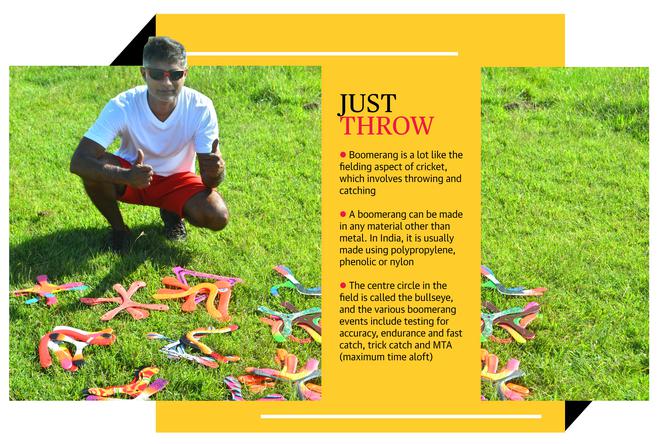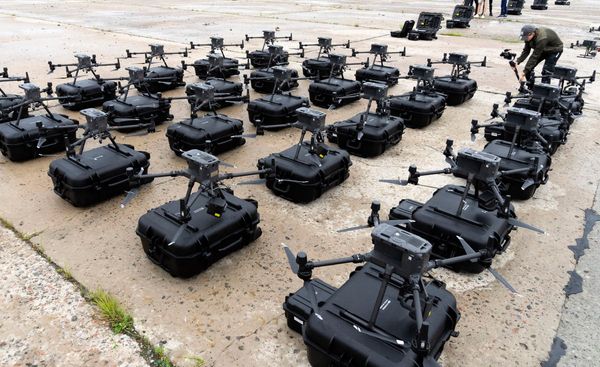As a child, Philip Sathyaraj was always interested in flying objects. When a friend went to Australia 15 years ago and gifted him a boomerang, he was thrilled. He opened the wrapper, and tried throwing it.
Only, it did not come back.
Several years later, when another friend informed him that a new toy store in the city had boomerangs in stock, Philip rushed to buy one. Back home, he threw it with the same excitement he had when he first did.
It still did not come back.
Cut to 2022. Chennai-based Philip, currently ranked the best Indian thrower, will be part of a three-member team representing the country in the World Boomerang Championships (WBC), to be held in France from August 15. An event that will have over hundred participants from 14 countries, this is the first time an Indian team is taking part in the WBC.
For the 44-year-old, who routinely practises at Marina and Besant Nagar beach and a few open spaces near Vandalur, the WBC will be his first international competitive tournament. “It will be great exposure. Though we have had four National tournaments in India, we have never had team events. We’re looking forward to doing well, and also looking at this as an opportunity to interact with boomerang enthusiasts across the world,” says Philip, who teams up with Jay Singh Yadav and Sunil Uikey for the WBC.

An Arts teacher by profession, Philip created an origami boomerang in 2014. “I threw it, and it came back.” It was a eureka moment for Philip. “If this could come back, so could the real one.” Subsequently, he came across the website of US-based The Boomerang Man, who had been in the business for decades and sold his equipment with a guarantee: if the boomerang didn’t come back, he would give your money back.
“It was a great deal, I thought,” recalls Philip, “I had to spend a lot of money on its shipping, but I still went ahead.”
That boomerang arrived, and after some practice, it came back. Slowly, he became good at it, so much so that he started making his own equipment. “Any boomerang thrower would try making one, and I did the same as well,” he recalls, about that phase in 2017. In 2018, he joined the Facebook page World of Boomerang, through which he understood that there was a World Championship. “That was the first time I knew this was a proper sport. Till then, I thought it was just recreational pursuit.”

The pandemic-induced lockdown meant that most sports shut shop, and boomerang was no exception. Fortunately, a virtual version (the Virtual Boomerang Tournament Race) commenced — one in which they could throw anywhere, shoot a video and send it. This had entries from all over the world; Philip came sixth, among numerous entries. “This gave me the confidence that I had it in me to take on the best of the world,” says Philip, who currently has over 75 boomerangs that he has bought and over 150 boomerangs that he has personally made. Boomerang competitions usually judge throwers on several parameters, including accuracy, endurance and fast catching skills, besides a category called Maximum Time Afloat (MTA), which judges how long it hovers before you catch it.
Vivek Montrose, currently the president of the Indo-Boomerang Association and the pioneer of the sport in India, says that India’s participation in the WBC will be a huge fillip to the sport. “We would like more people to take up the sport,” says Vivek, who is putting together an India-Australia two-day series in Delhi in November, and is also gunning for India hosting the WBC in 2026.
For now, all eyes are on their France trip. Apart from a lot of takeaways, Philip is also looking to give. “There’s a culture in the community of sharing boomerangs that we have made. For the World Championship, I am taking along with me 15 boomerangs, that I hope to give to fellow enthusiasts across the world.”







